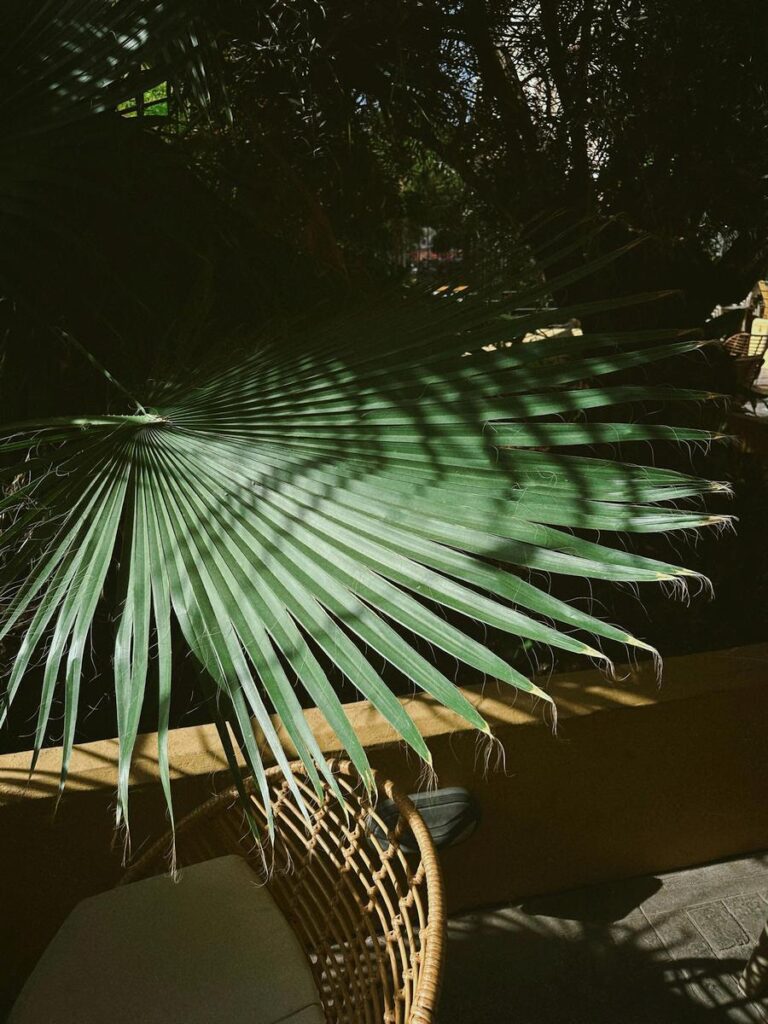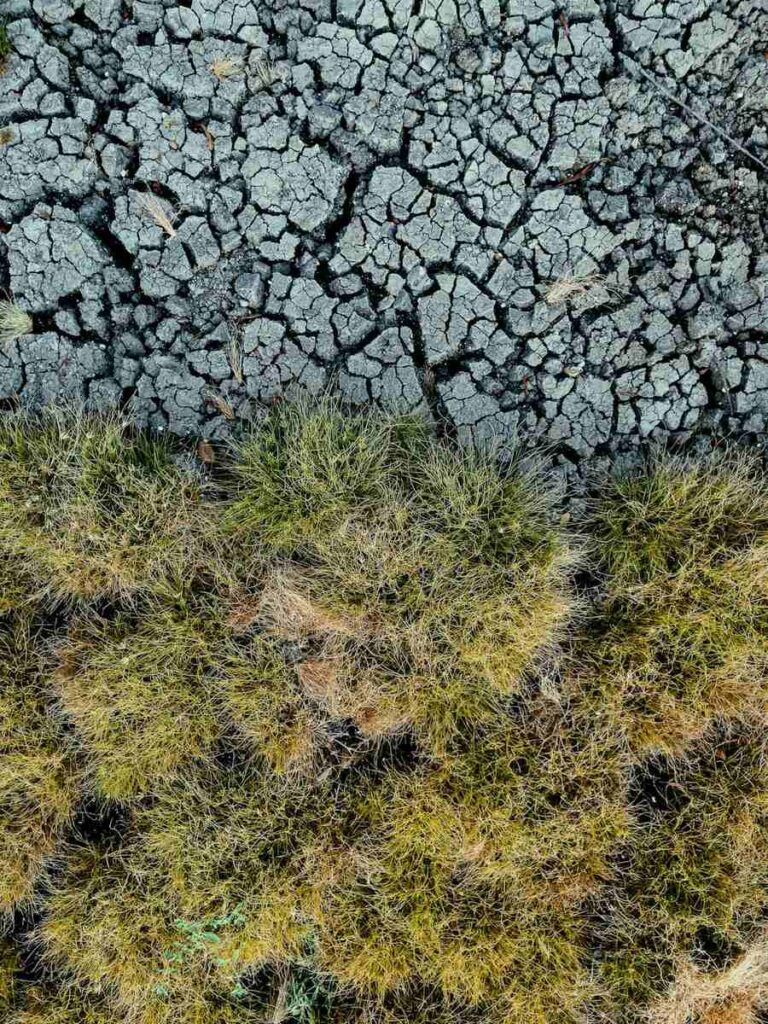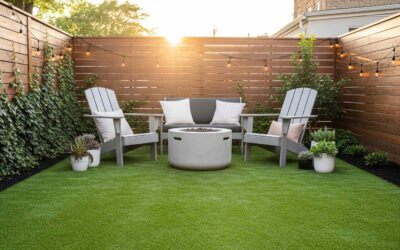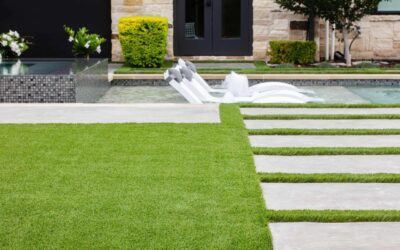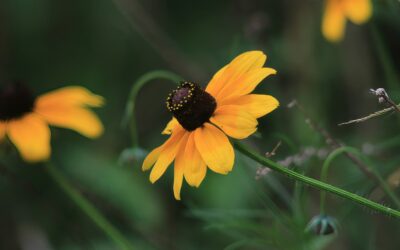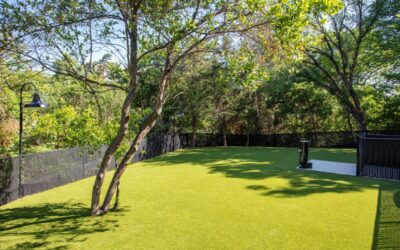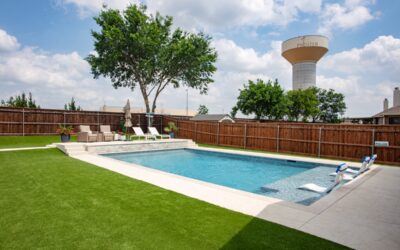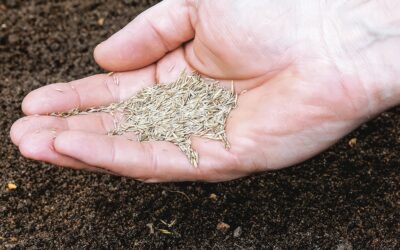Did you know that there are over 11,000 types of grass species in the world or that, in Texas alone, over 700 types of grass can grow?
How on earth do you choose the best grass for your lawn from so many types available? Certain types of grass are better suited to the Texan climate, soils, and yard conditions—and some are higher maintenance than others.
How do you know what to install?
Fortunately, you can narrow the choices down to around 11 or 12 turfgrasses, and, when push comes to shove, it’s only four or five that are commonly used for lawns in Texas.
Let’s look at the most common turf grass types in Texas—plus a grass alternative that you may not have considered yet.
FIVE MAIN TYPES OF GRASS IN TEXAS
The unforgiving climate and soil conditions in Texas make it essential to make the right grass choices if you want a yard that looks the part without too much maintenance.
From extreme heat to flash floods, occasional frosts, and droughts/extreme aridity in some areas— plus poor soil types in some areas—mean that resilient, drought-tolerant grass is essential. Some types are more suited to the cooler north of the state while others are more popular in the arid western or sub-tropical southern areas.
Ultimately, if you’re choosing grass seed or sod for your back or front yard in Texas, here’s what you need to know about the main options…
Bermuda grass
Bermuda grass is a popular and well-suited grass for the entire south of the U.S.
In Texas, you might see it more in the northern and central areas but it can be grown in most cities across the state. The turf is available in several forms: common Bermuda grass, improved Bermuda grass, and hybrid versions.
This warm-season grass is hardy and resilient with a lush look, good density, and soft feel. However, it’s also rugged and adapts well enough to the climates of northern and central Texas.
It is best planted from sod, plugs or seed in the late spring or early summer and is considered easy to establish. The grass requires little irrigation, making it quite drought-tolerant.
Because of its toughness, resilience, and performance with high foot traffic, Bermuda grass varieties are often chosen for sports fields in Texas. Hybrid Bermuda is especially popular for this application—though many professional stadiums have replaced grass with artificial grass largely because of the maintenance issue.
Another advantage of Bermuda grass in Texas is its resistance to pests and disease.
Any downsides to Bermuda grass?
Bermuda grass requires regular watering, fertilizing, and mowing more than once per week to flourish, which means that it can’t really be classed as “low maintenance”.
Bermuda grass will also struggle in shaded areas as it needs a good amount of sunlight. Many NFL football stadiums have switched to artificial grass because the shade created by tall stadiums makes growing grass very challenging.
GET A FREE ARTIFICIAL GRASS ESTIMATE
The experienced team at DFW Turf Solutions can help you install artificial grass—the best grass alternative for your backyard. Get a free estimate here.
St. Augustine grass
St. Augustine grass is especially common in front and backyards in south, central, and eastern Texas.
St. Augustine is another warm-season grass that provides a dense covering. It is well-suited to the soil types and climate in these regions, growing rapidly under normal hot, humid, subtropical conditions. It can handle shade well and drought moderately well.
St. Augustine grass can be planted with plugs or sod (seeds are not available) and lawns require regular watering in hotter, drier periods.
The most popular St. Augustine grasses in Texas are Palmetto, Texas Native, and Raleigh.
Any downsides to St. Augustine grass?
St. Augustine requires some maintenance, with fertilizing and regular irrigation, as well as weekly mowing. Fungal and pest problems can also affect St., Augustine and it may struggle in heavy foot traffic or colder snaps.
Zoysia grass
Another of the most popular warm-season grass types in Texas is Zoysia grass. Zoysia is probably the finest-looking grass in Texas included here, producing a lush green carpet. This explains its popularity for lawns.
Zoysia is only moderately drought-tolerant and shade-tolerant, which means it won’t be suitable for every yard in Texas but you do see it regularly on lawns in central and southern Texas especially. Some northern areas can even boast a flourishing zoysia grass lawn.
Shady yards will require a lot of maintenance with this type of grass but strains like Palisades and Zeon are more tolerant of both shade and drought.
Zoysia grows from sod or seeds in the right conditions without much fertilizer and because it grows more slowly than St Augustine, it generally requires less-frequent mowing. It is also highly pest-resistant.
Any downsides to Zoysia grass?
Zoysia grass is pricier and can be more challenging to establish and maintain than other types of grass in Texas. You may need to be patient over several seasons for a flourishing Zoysia grass lawn and if it gets damaged by heavy foot traffic, it will take time to recover.
Fescue grass
Fescue grass is sometimes found in northern parts of Texas (much more than in the south or central areas) because it is considered a hardy, cool-season grass better suited to the milder climate there.
The main types of fescue grasses are fine fescue, which has a soft texture and thin, needle-like blades, and tall fescue, with broader leaves. Sometimes, the two types are mixed but it grows in bunches so it does not mix well with other grass types in Texas.
Tall fescue is better than the fine variety in drought and heat tolerance but performs less well than fine fescue in heavily shaded or part-sun areas. Fescue grass generally tolerates poor soil conditions, is relatively low maintenance, and is disease- and insect-resistant.
Any downsides to Fescue grass?
Fine fescue fares poorly in heavy foot traffic because its fine blades fold and crumple easily—so it’s not the best option for a backyard playground area or mini-sports field. Some homeowners also find the color less attractive than other grass options for lawns.
Buffalo grass
You may also see buffalo grass in some properties across Texas though it’s more common in western regions than elsewhere.
This native Texan turf grass is highly drought-resistant and disease-resistant, making it a very low-maintenance alternative to the other grass types mentioned here.
Buffalo grass is slow-growing and requires little irrigation. This makes it an attractive option at first glance for Texas homeowners—but it is not the first choice for many home lawns in the state.
Any downsides to Buffalo grass?
Buffalo grass is more suited to the arid regions than the humid, subtropical areas of the state or areas that see more rainfall. Its light green coloration also puts some homeowners off.
Summary: Best grass types for different Texas regions
OTHER COMMON GRASS TYPES IN TEXAS
You may also see a couple of other grass types in Texas:
Ryegrass
Ryegrass is primarily a cool-season grass and, therefore, is rarely seen in Texas other than in northern areas of the state.
Often considered a “nurse” grass, which helps “green up” lawns that are recovering, homeowners in northern Texas are increasingly turning to perennial ryegrass as their main lawn grass. It handles shade very well, is pest-resistant, and stands up well to foot traffic but generally needs regular mowing.
The excessive heat in most of the state during the summer months makes ryegrass unsuitable for anywhere but the north or cool, mountainous areas.
Centipede grass
Another type of grass sometimes seen in Texas is Centipede grass. This is a Southeast Asian grass introduced into the U.S. over a century ago.
The main attractions of centipede grass are that it can thrive in poor soil and requires very little maintenance. Very little fertilizer is needed and it is highly tolerant of pests, heat, and humidity—as you might expect for an Asian grass.
You’ll find Centipede grass more in the south than the north of the state as it fares poorly in cold weather.
WHAT FACTORS AFFECT GRASS TYPE IN TEXAS?
Before deciding on the type of grass to install in your Texas yard, ask yourself the following important questions:
What is the purpose of the grass space?
We’ve been focusing mainly on lawn grasses but Texas homeowners use their yard spaces for a variety of activities.
For lawn grasses, the main qualities to look for are usually a combination of curb appeal, durability, and maintenance requirements.
If children use the area for play or backyard sports, durability becomes even more key. For a seldom-used lawn that you simply want to look great when guests are over for a barbecue on the patio, durability is less important. A backyard putting green would need different grass again.
How shaded is your yard?
Some grasses adapt poorly to shade and require regular sunlight to flourish. Consider this before selecting your type of grass in Texas.
If your yard is shaded by tall trees and foliage or other buildings for much of the day, you will do better with a more shade-tolerant grass like St. Augustine rather than Bermuda grass, for instance.
How much do you love mowing your grass?
If you look forward to mowing the grass and tending to your prize lawn, the maintenance requirements of the grass you choose will be less of a factor than the appearance.
However, many homeowners in Texas want to reduce the time they spend in their yards with a low-maintenance variety of grass.
The average lawn and garden takes around 70 hours of homeowner time per year and also guzzles up money. Running lawnmowers and using chemical fertilizers, herbicides, and weedkillers on the lawn are not great for the environment, either.
How much rainfall does your area get?
The grasses detailed above are all drought-tolerant to some extent but if you live in an area that can go weeks and weeks without any rainfall, you’ll need to prepare for this with the grass you choose and the maintenance you plan.
Buffalo grass is the most drought-resistant grass for the most arid, drought-prone western areas of Texas.
How often do you get storms or floods?
Some areas of Texas receive well above the average 27.25 inches of rainfall and are prone to flash floods, like in the Austin area. This is another factor to consider when you’re choosing the right grass for your lawn.
GRASS ALTERNATIVES IN TEXAS
Your choices for ground covering in your yard extend well beyond grass. If you’re looking for a surface that looks and feels like lush grass—but without the high maintenance or running costs— take a look at artificial grass.
The pros and cons of artificial grass speak for themselves and plenty of households in Texas have already made the switch. Some of the benefits they enjoy include:
With the improved appearance and performance and ongoing cost-savings with artificial grass, many of the traditional objections to installing synthetic grass have been overcome. Technology has vastly improved the products available, making it a viable alternative to the standard Texas grass types.
Other grass alternatives for homeowners can be used in combination with artificial grass or separately, such as gravel, crushed rock, pavers, mulch, and local native Texan plants.
FAQs
CONSIDERING SWITCHING TO ARTIFICIAL GRASS?
If you’re considering different backyard landscaping ideas for your Austin home, discuss your options with an artificial grass professional.










